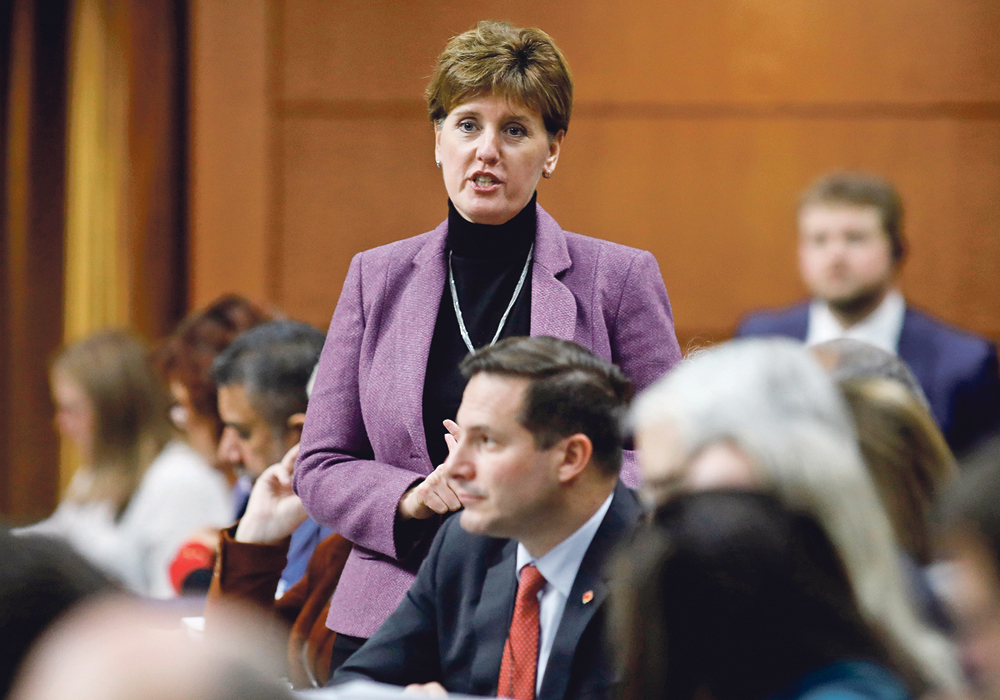Farmers want reference price margins returned to pre-2013 levels of 85 percent, rather than the current 70 percent
OTTAWA — Grain Growers of Canada chair Jeff Nielsen says a recent meeting of the country’s agriculture ministers failed to provide effective support for farmers facing challenges.
Only minor changes were made to AgriStability, the main priority item on the agenda for the Dec. 17 meeting in Ottawa.
Federal Agriculture Minister Marie-Claude Bibeau and her provincial counterparts announced that a full review of federal business risk management programs will be completed in April, with the findings discussed when the federal, provincial and territorial ministers meet again in July.
Read Also

Canadian Food Inspection Agency extends chronic wasting disease control program consultation deadline
Date extended for consultation period of changes to CWD program
Producers have long complained AgriStability is unresponsive and inadequate with many calling for reference price margins to be returned to pre-2013 levels of 85 percent rather than the current 70 percent.
“To say again that they’re going back to review (AgriStability) … they probably won’t come to a conclusion until the summer meeting, so clearly we’re going to lose 2020, that’s my fear,” said Nielsen.
When agriculture ministers met last summer, Nielsen said his interpretation was that solutions would be brought forward before they gathered again.
“It’s frustrating when we haven’t come up with anything new. This has been asked for some time,” he said.
Bibeau didn’t entirely reject the idea of changing reference price margins under AgriStability, but argued changing the limit would affect federal and provincial budgets.
“We thought that it would be more appropriate to start by doing a review of the programs and making sure that when we’re ready to put more money on the table, we would do it towards the right program,” she said.
To that end, a full review of federal BRM programs will be completed in April with the findings discussed when the federal, provincial and territorial ministers meet again in July.
“The continued lack of progress towards any significant program reforms leaves farmers without much-needed relief at this critical time, nor any certainty that assistance is on the way,” the Canadian Federation of Agriculture said in a statement.
It noted that a review of BRM programs has been underway for “nearly three years.”
“The fact that ministers were unable to commit to truly meaningful program reforms, while pushing this issue further down the road through further program reviews, suggests a lack of urgency and a continued disconnect between FPT (federal provincial territorial)governments and the realities facing farmers. Farmers continue to see increased trade and policy-related risks exacerbate already challenging weather conditions, threatening the viability of many farms and undermining the primary agriculture sector’s capacity for economic growth,” said CFA president Mary Robinson.
“Farmers from across all regions of Canada have clearly identified that a return to AgriStability coverage at 85 percent without a reference margin limit presents a simple, interim solution that can be implemented immediately while longer-term programming changes are considered. Additional review and consultations only further delay this much-needed response, leaving farmers with the sense that their governments are not grasping the critical issues at hand.”
Around $1.5 billion is dedicated to BRM programs annually, with AgriStability and AgriInvest being the core ones available to producers who need help covering losses due to revenue declines or falling prices.
In each of the past two federal budgets, $39.2 million was allocated for AgriStability, which is paid for jointly by Ottawa and the provinces at a 60:40 ratio.
The cost of increasing the limit back to 85 percent would cost an estimated $300 million, Bibeau said.
It is unclear how willing the provinces are to increase the limits, given it would likely result in them paying more as well.
“I’m actually quite disappointed with some provinces,” Nielsen said, stopping short of naming which ones.
“There seems to be a lack of support from provinces.”
Saskatchewan was able to get its main proposal accepted at the meeting — changing how private insurance is treated by AgriStability.
Bibeau said private insurance will be able to complement AgriStability and be used as a “top up” if producers choose to use it.
The federal government will also pilot a project that will use tax- return information for those applying to AgriStability in the hopes that it will make it easier to apply to the program, which producers have long described as complicated.
“It was one of the things we put on the table, so it makes me very happy to hear that the revenue generated from private insurance won’t go against the producers on their eligibility claim,” said Saskatchewan Agriculture Minister Dave Marit.
Nielsen said it is unlikely producers will jump to private insurance as a way to better access AgriStability, and questioned the new measure’s effectiveness in the face of consecutive bad harvests and accompanying increasing premiums.
He said his group will reach out to Bibeau early in 2020 to discuss its concerns.
“I think we’re going to have to engage with other sectors of government to really stress the point that we need solutions,” he said.
Marit and his prairie counterparts also had a chance to discuss the issue of carbon pricing with Bibeau. There are continuous complaints from producers and prairie governments that the cost of carbon is having a significant and costly impact on farmers drying their crop this year.
“I asked them to provide data, and help me gather more information on the situation, if I want to evaluate properly the impact on the sector,” she said.
“We recognize that the agriculture sector may face other types of challenges.”
Bibeau said she is open to evaluating more carbon pricing relief for producers but reiterated that she needs more data to make a strong case to her colleagues at the federal cabinet table.
The federal government has already announced it will be reviewing the impact of carbon pricing on the agriculture sector early in 2020.
The ministers also discussed trade challenges facing the agriculture industry and African swine fever.
















